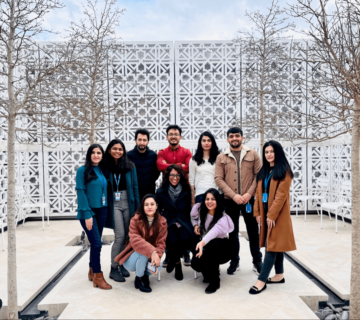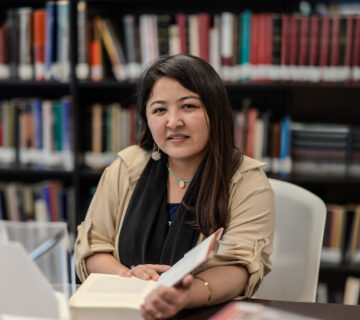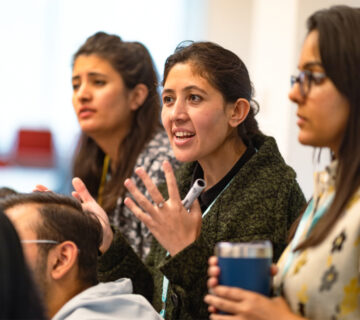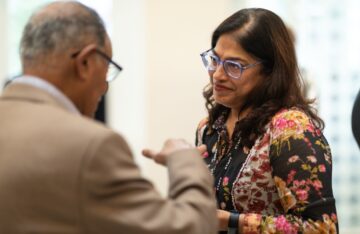GPISH and STEP students from the Class of 2010 traveled to Spain for an educational visit in February and March, respectively. As part of their courses “Architecture of the Muslim World” (GPISH) and “Religious Education and the Humanities in Secondary Education” (STEP), the two groups visited some of the most notable sites of Granada, Cordoba and Malaga.
In Granada, the students visited the quarter of Albaycin, which was declared a World Heritage Site by UNESCO in 1994. This was followed by a visit to the historic Alhambra Palace, built in the 13th and 14th centuries by the Sultans of the Nasrid dynasty, the last Muslim rulers of Al-Andalus.
Commenting on the trip, Parisa Sheralieva (GPISH 2010) said:
“It was an unforgettable experience! It is so gratifying to have the opportunity to experience the beauty and richness of this marvelous country, which is full of history and magnificent places such as the Alhambra Palace, leaving a trace in every person’s heart who visits it.”
Students then traveled north to Cordoba, visiting the Great Mosque of Cordoba; the most accomplished monument of the Umayyad dynasty of Cordoba. Further visits also included the momentous Madinat al-Zahra, founded by ‘Abd al-Rahman III, shortly after the proclamation of the Umayyad caliphateThe Muslim political institution or state centred around the caliph, which came to an end, historically, in 1924 with the disappearance of the Ottoman Empire. in Al-Andalus.
The educational tour of Spain concluded in Malaga, where many of the students took the opportunity to visit the old Muslim castle, known as the Gibralfaro, overlooking the city. Some students also visited another Muslim palace-fortress, the Alcazaba, which sits below the castle.
Shezeleen Kanji (STEP 2010) remarked:
“Spain provided me with the opportunity to imagine the past more clearly, particularly how Muslims, Christians and Jews lived and worked together in close proximity with each other in peace. This ‘convivencia’, or pluralism as we may call it today, created opportunities for shared expressions and ideas, from which emerged models of magnificent and thriving cities, palaces, spaces for worship and opportunities for building a knowledge society. It was evident that, in the past, people negotiated their environment and lived with the choices they made.”






